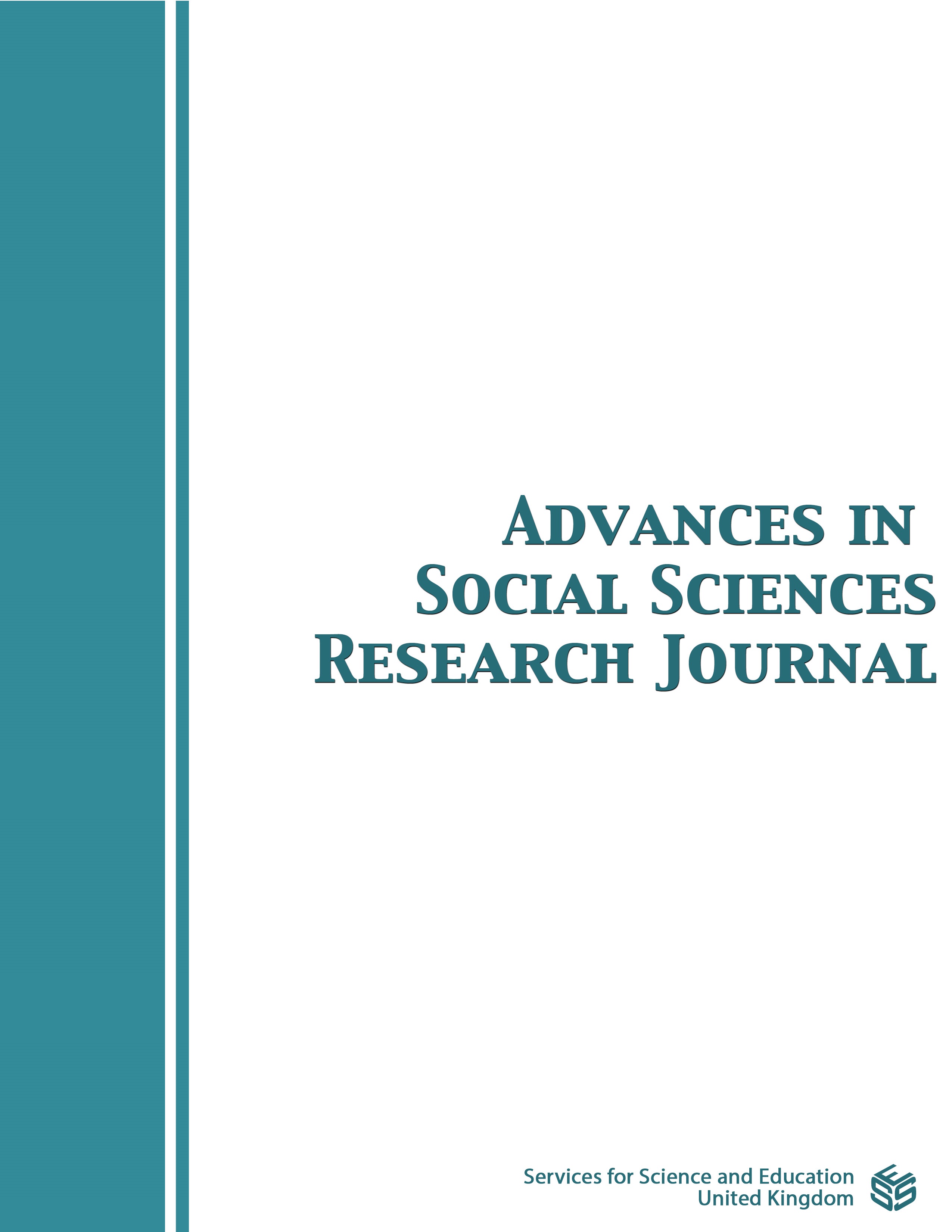Comparison of Attachment Problems in Romantic Relationships Between Individuals with Bipolar Diagnosis and Individuals Without a Known Psychiatric Diagnosis
DOI:
https://doi.org/10.14738/assrj.910.13323Abstract
Parenting Styles, Attachment Styles, Loneliness as a predictor of Relationship satisfaction
Attachment is when one forms a deep and lasting emotional connection to one another across time and space. Attachment is not always mutual. It is also possible to connect to a person unrequitedly. The bond that an individual has with the people in his life is related to attachment styles in infancy. There has been postulation about the connection between bipolar and attachment problems, and several studies have been done on the relationship between anxiety, depression, and relationship satisfaction in general but due to the scarcity and unavailability of bipolar patients, few studies have been conducted. Hence this study aimed to examine the relationship between attachment styles, parenting styles, loneliness, and romantic relationship satisfaction among individuals diagnosed with bipolar disorders and people without the diagnosis. One hundred and sixty-nine people participated in this study. Parenting styles were examined using the Parenting Authority Questionnaire (PAQ), The Experience in Close Relationships questionnaire was used to evaluate the attachment style, UCLA Loneliness Scale measured loneliness and the Relationship Scales Questionnaire (RSQ) evaluated the relationship satisfaction. Results of the multiple regression showed that there was a collective significant relationship between, loneliness, attachment styles, and relationship satisfaction.Also, a significant negative relationship between Avoidance Attachment and romantic relationship satisfaction and also a significant negative relationship between Anxiety Attachment and romantic relationship satisfaction were found. But no significant relationship between parenting styles and romantic relationship satisfaction.
References
American Psychiatric Association. (2000). Diagnostic and statistical manual of mental disorders (4th ed., text rev. ed.). Washington, DC: Author.
Baumrind, D. (1972). An exploratory study of socialization effects on black children: Some black-white comparisons. Child Development, 43(1), 261–267. https://doi.org/10.2307/1127891
Bowlby, J. (1988). A secure base. New York: Basic Books.
Dion, G. L., Tohen, M., Anthony, W. A, & Waternaux, C. S. (1988). Symptoms and functioning of patients with bipolar disorder six months after hospitalization. Hospital and Community Psychiatry, 39, 652-657.
Gökalp , K. (2021). Avoidance of intimacy: An attachment perspective. Journal of Social and Personal Relationships, 7, 147-178.
Günalp, A. (2007). Farklı anne baba tutumlarının okul öncesi eğitim çağındaki çocukların özgüven duygusunun gelişimine etkisi (Aksaray ili örneği) (Doctoral dissertation, Selçuk Üniversitesi Sosyal Bilimler Enstitüsü). Retrieved from http://acikerisim.selcuk.edu.tr:8080/xmlui/bitstream/handle/123456789/296/ayse_gunalp_tez.pdf?sequence=1.
Hirschfeld, R. M. A., Lewis, L., & Vornick, L. A. (2003). Perceptions and impact of bipolar disorder: How far have we really come? results of the National Depressive and Manic-Depressive Association 2000 survey of individuals with bipolar disorder. Journal of Clinical Psychiatry, 64, 161-174.
Kaya, M. (1997). Ailede Anne-Baba Tutumlarının Çocuğun Kişilik ve Benlik Gelişimindeki Rolü. Ondokuz Mayıs Üniversitesi İlahiyat Fakültesi Dergisi, 9(9), 193-204. Retrieved from http://dergipark.ulakbim.gov.tr/omuifd/article/download/5000073583/5000067842
Kökçü, F., & Kesebir, S. (2010). İki Uçlu Olgular ve Çocuklarında Bağlanma Biçiminin Mizaç, Kişilik ve Klinik Özellikler ile İlişkisi: Kontrollu Bir Çalişma [The relationship between attachment style, and temperament, personality and bipolar symptoms: a controlled study on bipolar patients and their children]. Turk psikiyatri dergisi = Turkish journal of psychiatry, 21(4), 309–318
Könezoğlu, B. (2006). Aile ve Ailenin Korunması. (master’s thesis Ankara Üniversitesi, Sosyal Bilimler Enstitüsü, Özel Hukuk (Medeni Hukuk) Anabilim Dalı, Ankara). Retrieved from http://turkiyeaileplatformu.com/wp-content/uploads/2014/08/bo%C5%9Fanma-s%C3%BCrecinde-olan-ailelerde-%C3%A7ocuklar%C4%B1n...pdf.
McInnis, M. G., Burmeister, M., & DePaulo, J. R. (2007). Major Mood Disorders. In D. L. Rimoin, J. L. Connor, A. E. H. Emery & R. E. Pyeritz (Eds.), Emery and Rimoin's Principles and Practice of Medical Genetics (5 ed., pp. 2615-2628). Philadelphia: Elsevier.
Merikangasm, K. R., Akiskal, H. S., Angst, J., Greenberg, P. E., Hirschfeld, R. M. A., Petukhova, M., & Kessler, R. C. (2007). LIfetime and 12-month prevalence of bipolarspectrum disorder in the national comorbidity survey replication. Archives of General Psychiatry, 64(5), 543-552. doi: 10.1001/archpsyc.64.5.543
Michalak, E. E., Yatham, L. N., Maxwell, V., Hale, S., & Lam, R. W. (2007). The impact of bipolar disorder upon work functioning: a qualitative analysis. Bipolar Disorders, 9(1/2), 126-143. doi: 10.1111/j.1399-5618.2007.00436.x
Ostacher, M. J., Nierenberg, A. A., Iosifescu, D. V., Eidelman, P., Lund, H. G., Ametrano, R. M., . . . Perlick, D. A. (2008). Correlates of subjective and objective burden among caregivers of patients with bipolar disorder. Acta Psychiatrica Scandinavica, 118(1), 49-56. doi: 10.1111/j.1600-0447.2008.01201.x
Özmen, S. K. (2004). Aile içinde öfke ve saldırganlığın yansımaları. Ankara Üniversitesi Eğitim Bilimleri Fakültesi Dergisi, 37(2), 27-39. Retrieved from http://www.manevisosyalhizmet.com/wp-content/uploads/2010/05/aile_ofke_saldirganlik.pdf
Robb, J. C., Cooke, R. G., Devins, G. M., Young, L. T., & Joffe, R. T. (1997). Quality of life and lifestyle disruption in euthymic bipolar disorder. Journal of Psychiatric Research, 31(5), 509-517.
Sinal, A.(2016).The Miracle Role of Imagery in Hypnotherapeutic and Psychotherapeutic Practice. International Journal of Innovation and Research in Educational Sciences 3.2 :171-179.
Sinal, A. (2020). How Psychoanalytic Process’s Work: Considering the Relation between Traditional Theory and Contemporary Scientific Theory and Techniques. Mediterranean Journal of Social Sciences, 11(5), 1-1.
Sümer, N., & Güngör, D. (1999). Yetişkin bağlanma stilleri ölçeklerinin Türk örneklemi üzerinde psikometrik değerlendirmesi ve kültürlerarası bir karşılaştırma. Türk Psikoloji Dergisi, 14(43), 71-106. Retrieved from http://www.nebisumer.com/wp-content/uploads/2016/01/Sumer-Gungor_baglanma_TPD1999_14_71-106.pdf.
Downloads
Published
How to Cite
Issue
Section
License
Copyright (c) 2022 Nisa Aliş

This work is licensed under a Creative Commons Attribution 4.0 International License.
Authors wishing to include figures, tables, or text passages that have already been published elsewhere are required to obtain permission from the copyright owner(s) for both the print and online format and to include evidence that such permission has been granted when submitting their papers. Any material received without such evidence will be assumed to originate from the authors.






